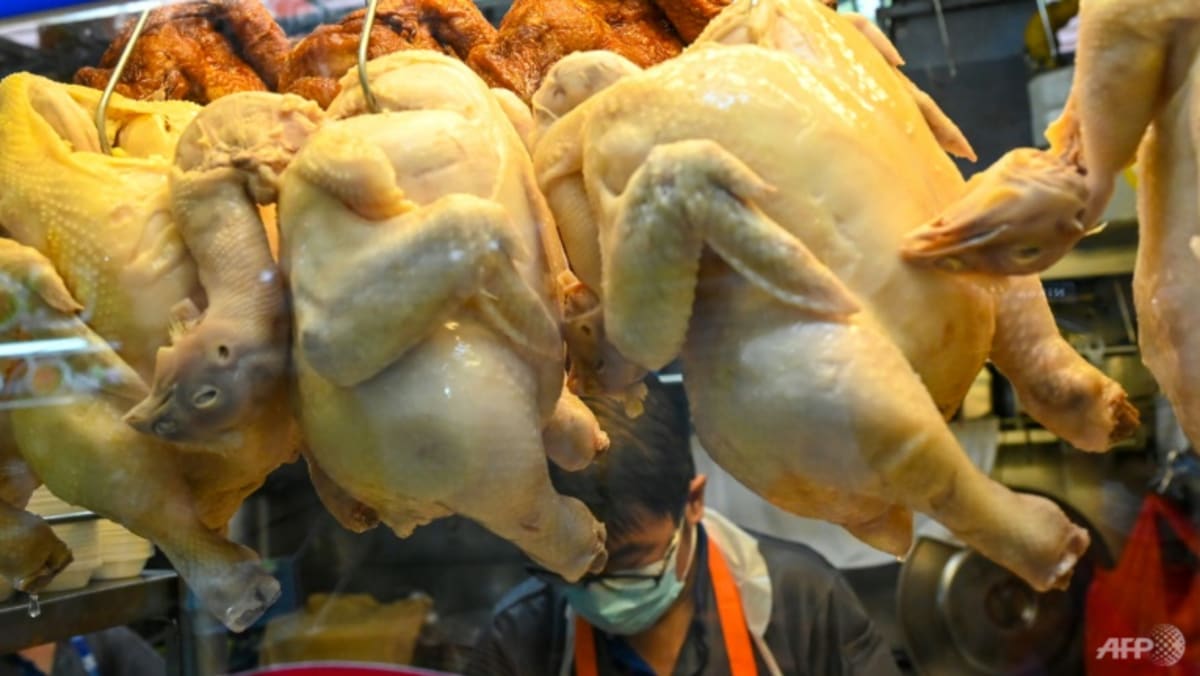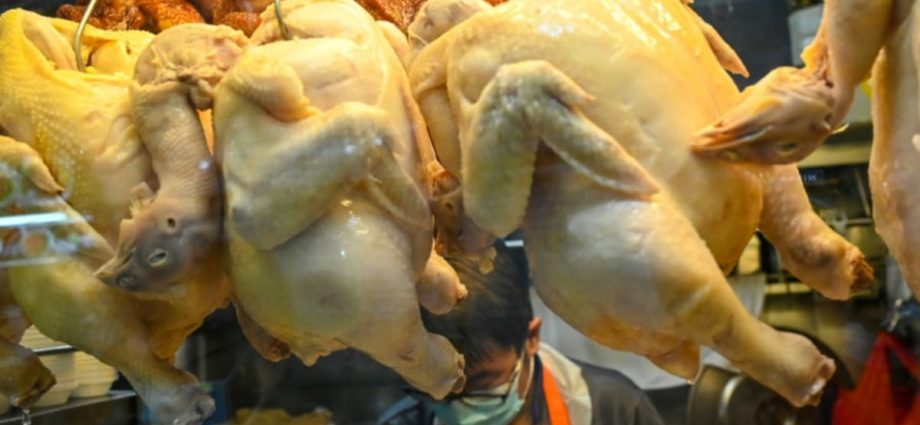
SINGAPORE: Chicken rice stalls are subject to more stringent and frequent checks as the dish poses higher food safety risks, the Singapore Food Agency (SFA) said on Friday (Jun 9).
The agency was responding to CNA’s queries about a YouTube video saying that nearly half of 100 chicken rice samples tested in a lab were found to have exceeded Singapore’s regulatory limits for E. coli bacteria.
A common preparation method for the dish involves boiling the chicken before placing it in cold water, which means the meat may be undercooked.
The chickens are also often displayed at room temperature for hours, where bacteria that survived the cooking process may continue to grow.
“When chickens are sliced to serve, cross-contamination could occur from handling meat or through the chopping boards and other surfaces,” SFA said.
SFA said it looks into public feedback and monitors food stalls by collecting samples and testing them for microbiological contamination to ensure food safety requirements are met.
The agency received 126 instances of feedback on chicken rice stalls from 2020 to May this year. It took enforcement action against one stall.
“In addition, enforcement actions were taken against 22 other chicken rice stalls found to fail our standards under SFA’s Market Monitoring Programme,” the agency said, adding that the rate of failure due to E. coli detection in chicken rice samples has decreased in recent years.
Nearly 40 per cent of chicken rice samples tested in 2021 exceeded the regulatory limit for E. coli bacteria in ready-to-eat food, according to SFA’s website. In 2022, that figure was 13 per cent. Pathogens were only found in 0.9 per cent of chicken rice samples in both years.
“There has been no reported foodborne illness cases involving chicken rice since 2020,” SFA said.
Most strains of E. coli do not cause illnesses. It is commonly used as an indicator of safety because the presence of high levels of the bacteria is linked to poor hygiene, cross-contamination, poor storage practices and insufficient cooking.
SFA said it will continue to remind chicken rice stallholders about food safety practices.
E. COLI IN CHICKEN RICE SAMPLES
YouTuber Angel Hsu posted a video on Jun 3 about visiting 100 chicken rice stalls to find the best one. But she also bought an additional packet that was sealed in a food-grade bag and put in an ice box before being sent to a lab for testing.
All components of the chicken rice packet including the chilli, cucumber and garnish were tested in the laboratory, Ms Hsu said in response to queries.
According to data she shared online, 45 stalls had E. coli bacteria exceeding SFA’s limit of 100 colony-forming units per gram (cfu/g). Four stalls had a reading of more than 490,000 cfu/g, which is the upper limit of the lab’s machine.
Ms Hsu, who used to work in a microbiology lab, said she had diarrhoea and stomachaches every day while filming the video but did not take any tests to determine if she had a bacterial infection.
She told CNA she made the video to show tourists that there are many good chicken rice stalls in Singapore beyond the famous ones.
“Also, my university professor used to mention that steamed chicken is the best medium for bacteria growth hence this video idea came about,” she said.
Medical doctor Leslie Tay, who also runs popular food blog ieatishootipost, said he commends Ms Hsu’s effort but pointed out that some places may have a lower bacterial count because they were sampled right after the chicken was cooked.
“The longer the chicken hangs at room temperature, the higher the risk,” he wrote on Facebook, advising readers to eat chicken rice for lunch instead of dinner.
But he added that high E. coli counts do not always lead to outbreaks because only a few strains cause serious illness.

